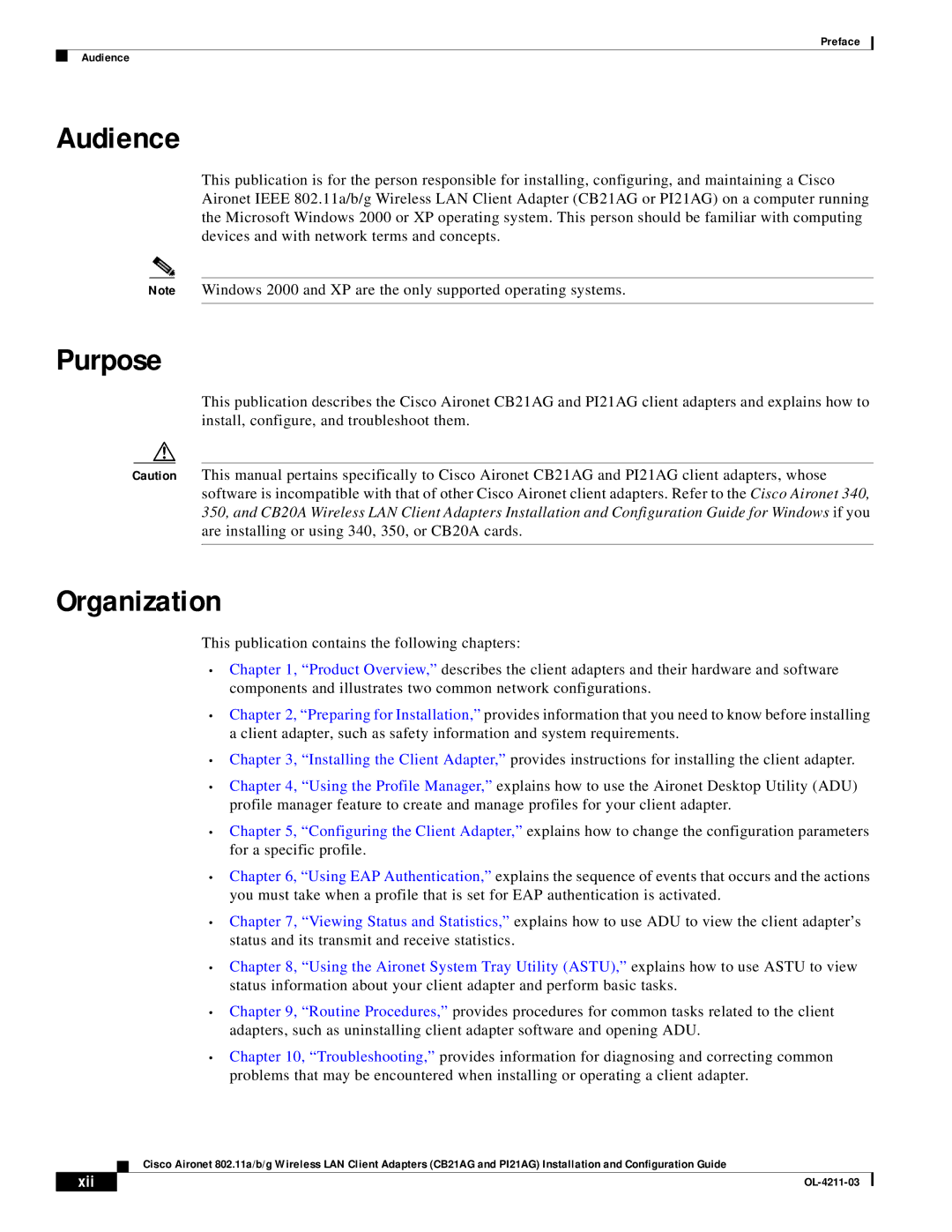
Preface
Audience
Audience
This publication is for the person responsible for installing, configuring, and maintaining a Cisco Aironet IEEE 802.11a/b/g Wireless LAN Client Adapter (CB21AG or PI21AG) on a computer running the Microsoft Windows 2000 or XP operating system. This person should be familiar with computing devices and with network terms and concepts.
Note Windows 2000 and XP are the only supported operating systems.
Purpose
This publication describes the Cisco Aironet CB21AG and PI21AG client adapters and explains how to install, configure, and troubleshoot them.
Caution This manual pertains specifically to Cisco Aironet CB21AG and PI21AG client adapters, whose software is incompatible with that of other Cisco Aironet client adapters. Refer to the Cisco Aironet 340, 350, and CB20A Wireless LAN Client Adapters Installation and Configuration Guide for Windows if you are installing or using 340, 350, or CB20A cards.
Organization
This publication contains the following chapters:
•Chapter 1, “Product Overview,” describes the client adapters and their hardware and software components and illustrates two common network configurations.
•Chapter 2, “Preparing for Installation,” provides information that you need to know before installing a client adapter, such as safety information and system requirements.
•Chapter 3, “Installing the Client Adapter,” provides instructions for installing the client adapter.
•Chapter 4, “Using the Profile Manager,” explains how to use the Aironet Desktop Utility (ADU) profile manager feature to create and manage profiles for your client adapter.
•Chapter 5, “Configuring the Client Adapter,” explains how to change the configuration parameters for a specific profile.
•Chapter 6, “Using EAP Authentication,” explains the sequence of events that occurs and the actions you must take when a profile that is set for EAP authentication is activated.
•Chapter 7, “Viewing Status and Statistics,” explains how to use ADU to view the client adapter’s status and its transmit and receive statistics.
•Chapter 8, “Using the Aironet System Tray Utility (ASTU),” explains how to use ASTU to view status information about your client adapter and perform basic tasks.
•Chapter 9, “Routine Procedures,” provides procedures for common tasks related to the client adapters, such as uninstalling client adapter software and opening ADU.
•Chapter 10, “Troubleshooting,” provides information for diagnosing and correcting common problems that may be encountered when installing or operating a client adapter.
Cisco Aironet 802.11a/b/g Wireless LAN Client Adapters (CB21AG and PI21AG) Installation and Configuration Guide
| xii |
|
|
|
|
